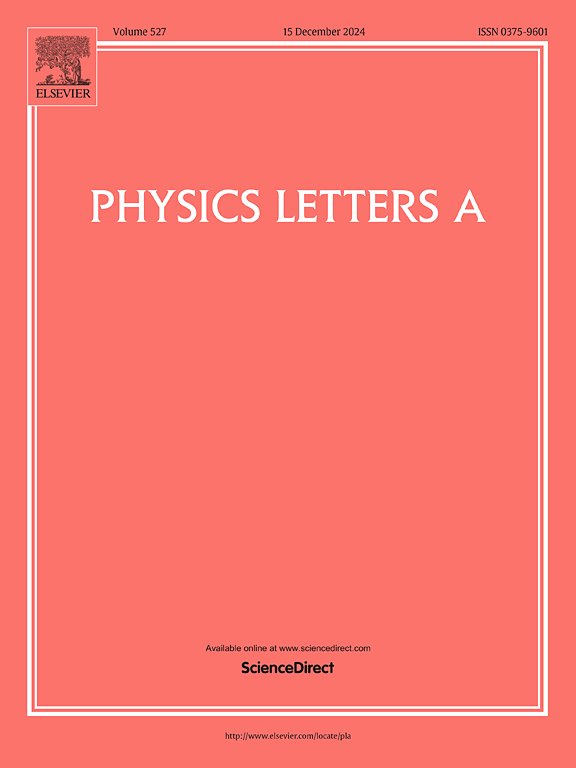The Ablowitz-Ladik equation featuring two time-varying coefficients: Continuum limit, modulation instability, novel localized wave solutions and related dynamics
IF 2.3
3区 物理与天体物理
Q2 PHYSICS, MULTIDISCIPLINARY
引用次数: 0
Abstract
This letter addresses the Ablowitz-Ladik equation featuring two time-varying coefficients. Initially, we investigate its continuum limit and modulation instability. Subsequently, we extend the generalized -fold Darboux transformation to this variable-coefficient equation, from which we derive a variety of exact solutions such as breather, rogue wave, periodic wave, as well as their combined interaction solutions with two time-varying coefficients on diverse seed backgrounds, and their localized wave structures are analyzed and discussed graphically. Intriguingly, due to the effects of variable coefficients and control parameters, we discover that a fundamental rogue wave characterized by a single peak and two valleys can be divided into two fundamental rogue waves, and we further obtain a novel rogue wave situated on a kink soliton background, while these new phenomena cannot be found in the constant coefficient Ablowitz Ladik equation. These innovative discoveries will broaden our understanding of particular physical phenomena in optical fiber.
具有两个时变系数的Ablowitz-Ladik方程:连续统极限、调制不稳定性、新的局域波解和相关动力学
这封信讨论了具有两个时变系数的Ablowitz-Ladik方程。首先,我们研究了它的连续极限和调制不稳定性。随后,我们将广义(p,N−p)倍Darboux变换推广到该变系数方程,由此导出了在不同种子背景下呼吸波、异常波、周期波等各种精确解,以及它们具有两个时变系数的组合相互作用解,并对它们的局域波结构进行了图解分析和讨论。有趣的是,由于变系数和控制参数的影响,我们发现一个具有单峰两谷特征的基性异常波可以被划分为两个基性异常波,并进一步得到一个位于扭结孤子背景上的新的基性异常波,而这些新现象在常系数Ablowitz Ladik方程中是找不到的。这些创新的发现将扩大我们对光纤中特定物理现象的理解。
本文章由计算机程序翻译,如有差异,请以英文原文为准。
求助全文
约1分钟内获得全文
求助全文
来源期刊

Physics Letters A
物理-物理:综合
CiteScore
5.10
自引率
3.80%
发文量
493
审稿时长
30 days
期刊介绍:
Physics Letters A offers an exciting publication outlet for novel and frontier physics. It encourages the submission of new research on: condensed matter physics, theoretical physics, nonlinear science, statistical physics, mathematical and computational physics, general and cross-disciplinary physics (including foundations), atomic, molecular and cluster physics, plasma and fluid physics, optical physics, biological physics and nanoscience. No articles on High Energy and Nuclear Physics are published in Physics Letters A. The journal''s high standard and wide dissemination ensures a broad readership amongst the physics community. Rapid publication times and flexible length restrictions give Physics Letters A the edge over other journals in the field.
 求助内容:
求助内容: 应助结果提醒方式:
应助结果提醒方式:


